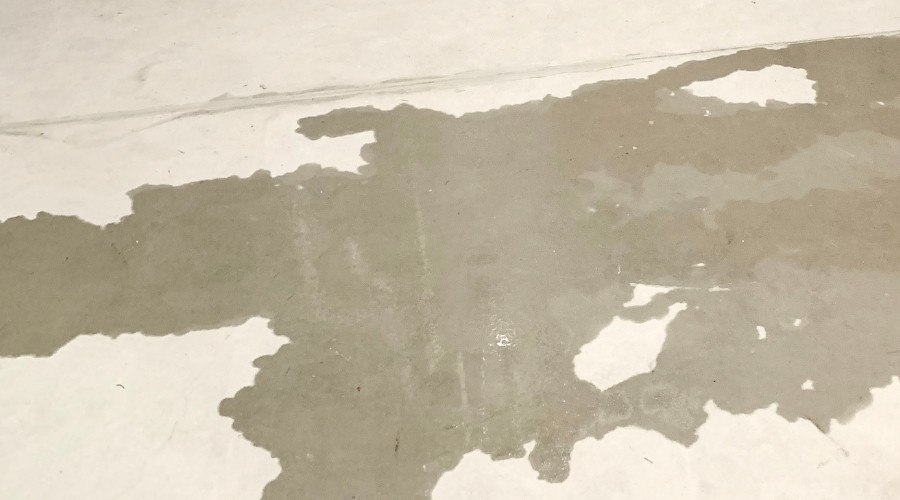Simi Valley plumbers explain slab leak signs, causes, and why professional detection and repair matter.
Simi Valley, United States - September 26, 2025 / Barcena Plumbing /
Slab Leak Basics Explained
A sudden spike in the water bill, unexplained damp spots, or a musty odor can all point to a slab leak hidden beneath a concrete foundation. Left unchecked, slab leaks can cause significant water damage, undermine structural stability, and create indoor air concerns. Understanding how these leaks develop, recognizing early signs, and knowing the options for slab leak detection and repair helps protect both the building and the budget.
What Are Slab Leaks?
A slab leak occurs when pressurized water lines or return lines located beneath a concrete slab crack, corrode, loosen at fittings, or otherwise fail. Instead of remaining contained, water seeps into the surrounding soil and can wick upward through tiny pores in the concrete. Over time, this unwanted moisture may cause the slab to shift or settle unevenly, potentially reaching flooring materials, baseboards, and interior walls.
Because these issues develop out of sight, symptoms can be subtle at first. Slightly warmer areas on hard floors may appear if a hot-water line is involved. Persistent dampness along interior perimeters, faint discoloration in flooring, or a continuous sound of water movement when fixtures are off can also be clues. Early slab leak detection—using acoustic listening, pressure tests, and thermal tools—helps identify the source precisely, minimizing invasive work and limiting further water damage or a prolonged high water bill.
Signs of a Slab Leak
 Recognition of early indicators can prevent extensive repairs:
Recognition of early indicators can prevent extensive repairs:
- Damp or darkened patches on the flooring that do not fully dry
- A musty or earthy odor near lower levels or interior walls
- New cracks in floors, baseboards, or the slab that lack another clear cause
- Warm zones on tile or concrete hint at a hot-water line issue
- Warped or cupped wood flooring, loose tiles, or rippling carpet
- Unexplained increase in water usage, a steadily rising water bill, or a sudden high water bill without a change in habits
- Water meter movement when fixtures and appliances are not operating
When multiple signs appear together, a professional assessment can confirm the presence of slab leaks and outline the most suitable slab leak repair plan.
Common Causes of a Slab Leak
 Several conditions commonly lead to slab leaks beneath a foundation:
Several conditions commonly lead to slab leaks beneath a foundation:
- Pipe corrosion: Over time, water chemistry and soil conditions can thin metal pipe walls or create pinhole leaks. Hot-water lines are often more vulnerable due to temperature cycling.
- Ground movement: Expansive or shifting soils, seasonal moisture changes, and settlement place stress on rigid piping. Repeated movement can crack pipes or separate joints.
- Excess pressure: Elevated water pressure accelerates wear on elbows, fittings, and weak points, making leaks more likely beneath the slab.
- Installation issues: Sharp bends, inadequate support, or contact with abrasive materials can cause premature wear. Poorly secured lines may rub against concrete or rebar, leading to abrasion.
- Root intrusion and obstructions: Tree roots can infiltrate small openings in nearby lines, while blockages or buildup can raise internal pressures and stress piping.
A precise diagnosis guides the right repair. For isolated failures, a targeted access point and spot repair may be sufficient. If piping shows widespread wear, rerouting a section or replacing longer runs can provide a more durable solution. In some cases, pinhole clusters or severe corrosion indicate that partial system renewal is the most cost‑stable option. Regardless of the chosen route, timely slab leak repair helps prevent the compounding of water damage and brings the water bill back to normal levels.
Acting promptly is essential. Ongoing moisture can deteriorate finishes, encourage mold growth, and weaken materials adjacent to the slab. Once slab leak detection pinpoints the source, addressing the underlying cause—such as correcting pressure, adding supports, or improving drainage—helps prevent recurrence. After repairs, a short period of monitoring water usage and inspecting adjacent finishes ensures that conditions stabilize and that no secondary leaks remain.
By understanding how slab leaks behave, recognizing early symptoms, and pursuing targeted repairs, properties can avoid long-term complications and extensive structural remediation. A thoughtful plan limits demolition, controls costs, and protects both the foundation and interior spaces from hidden moisture damage.
About Barcena Plumbing
Barcena Plumbing is a locally owned and operated plumbing company, providing expert service to the communities of Simi Valley and the surrounding areas. They prioritize customer satisfaction, offering attention to detail and on-time service from trusted plumbers. Call them today for Slab Leak Repair in Simi Valley, CA.

Contact Information:
Barcena Plumbing
3691 Township Avenue
Simi Valley, CA 93063
United States
Teresa Robertson
(805) 221-7795
https://www.barcenaplumbing.com/


